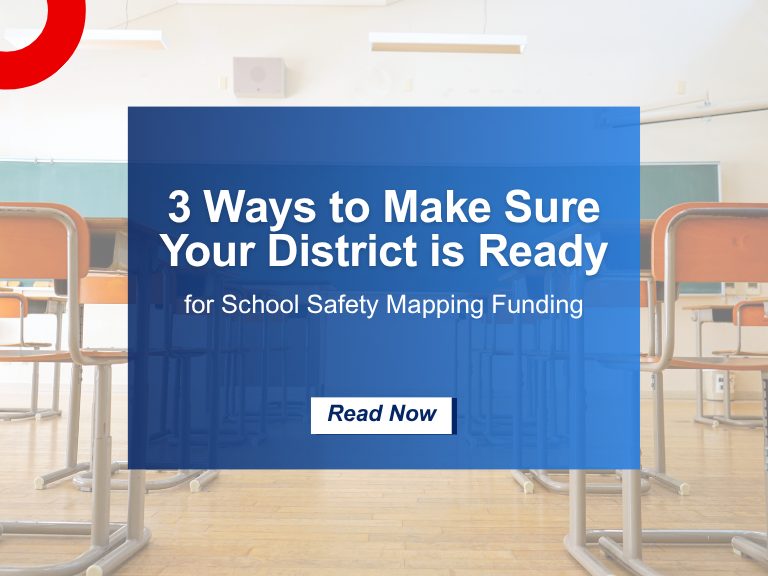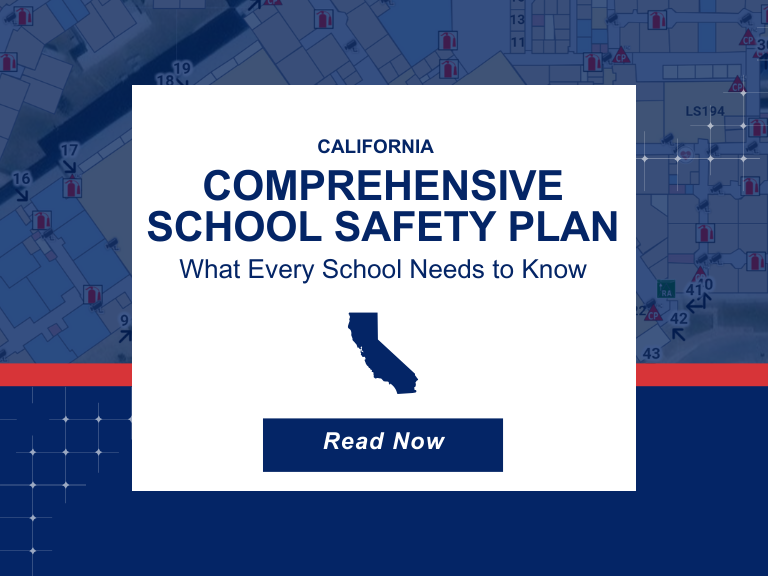HB 268 School Mapping Data: What Georgia’s New Safety Law Means for Schools
Introduction
The need for precise, up-to-date school mapping data has never been greater. Georgia’s new safety mandate, Ricky and Alyssa’s Law, now requires all public schools to maintain digital maps and panic alert systems to improve emergency response.
But this law is just one step in a growing national movement. School mapping data is becoming a foundational requirement for keeping students, staff, and responders safer during critical incidents.
At GeoComm, we help schools move beyond static PDFs to GIS-powered school mapping data that’s interactive, interoperable, and built for 9-1-1.
What Is School Mapping Data—and Why It Matters
School mapping data refers to digital representations of school buildings, grounds, and infrastructure that first responders can access during emergencies. Unlike static floor plans, these maps are searchable, scalable, and designed for integration with 9-1-1 systems and public safety platforms.
Key components of quality school mapping data:
- Detailed interior layouts with room labels and entry/exit points
- GIS coordinates for high-value locations (AEDs, fire extinguishers, cameras)
- Dynamic layers that can be updated as the building changes
- Secure access for 9-1-1, dispatchers, SROs, and emergency agencies
Without this data, first responders lose time and visibility. With it, they can act faster—and save lives.
GeoComm’s School Safety search functionality helps first responders quickly locate key areas—like classrooms, exits, and AEDs—on digital school maps to improve response times and coordination during emergencies.
Georgia’s New Law: What’s Required
House Bill 268 (Ricky and Alyssa’s Law) was signed by Governor Brian Kemp in April 2025. The law includes new safety requirements for all Georgia public schools such as:
- Panic Alert Systems: Schools must implement mobile systems that instantly notify 911 and first responders during a crisis.
- Annual School Mapping Data Submission: Every school must provide updated digital maps to emergency response agencies once per year.
- Threat Identification & Record Transfer: Faster sharing of behavioral threat records and student information is now mandated between schools.
How GeoComm Delivers the School Mapping Data Georgia Needs
GeoComm has helped thousands of schools across the U.S. transition from outdated floor plans to dynamic, GIS-based school mapping data that meets and exceeds regulatory requirements.
Why schools trust GeoComm:
✅ Compliant with public safety standards including CLDXF and NG9-1-1
✅ Real-time access for 911, PSAPs, and first responders
✅ Secure cloud hosting with permissions for agency coordination
✅ Custom-built maps for any school size or layout
✅ Proven results across statewide initiatives in Iowa, Minnesota, and more
With GeoComm, Georgia districts gain more than just compliance—they gain a long-term digital infrastructure for safety.
Funding Opportunities for School Mapping Data
Even though HB 268 doesn’t allocate specific funds, schools have options to cover implementation costs:
- Georgia’s School Safety Grant Program
- Federal grants like COPS SVPP or STOP School Violence
- ESSER funding for technology and emergency response upgrades
- Public-private partnerships with school safety solution providers
GeoComm can help your district identify and navigate these funding sources.
School Mapping Data: Your Foundation for Safer Schools
Emergency preparedness starts with visibility. Whether it’s a fire, an intruder, or a medical emergency, school mapping data is the foundation for faster, coordinated response.
Ricky and Alyssa’s Law is just the beginning. As more states adopt digital mapping requirements, schools need a trusted partner who understands both GIS and public safety.
Is your school ready to meet Georgia’s new HB 268 school mapping data safety standards?
👉 Schedule a School Mapping Consultation


